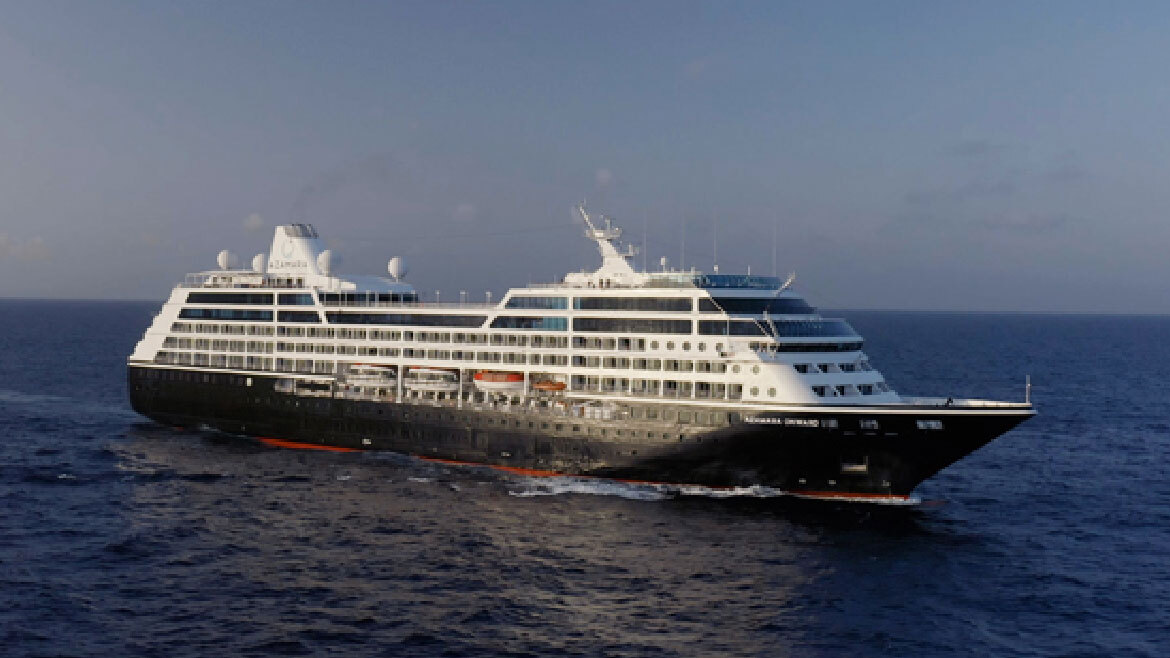Chinese odyssey: a country of extremes
All I can hear are the slight ripples of water as the YangziExplorer eases its way upstream.
I’m sitting on the top deck at close to midnight on thethird and final nightof our sailing trip along China’s mighty Yangtze. There’salmost total silence as only a handful of people have joined me to simply stareup at the plethora of bright shining stars in the sky. There are too many toeven attempt to count.
I’d not expected such a sight, having heard all thecriticisms about pollution, and especially as my Chinese odyssey had begun inBeijing, where the stars are hidden by a grey fog most evenings. The two placesare worlds apart.
As I lay back on the comfy sun loungers, I’m wrapped up inthe tranquillity and peacefulness of my surroundings. All that changes in aheartbeat. “Did you see that ” shouts one person as they jump up from theirslumber. Another says: “I’ve never seen anything like that before.”
Our faces beam with excitement as we turn to check we’ve allspotted the same thing – a dazzling shooting star.
I stay up on deck for another hour or so, hoping to see a secondone, but also because the warm night breeze feels like a blanket around me.
I’d boarded Sanctuary Retreats’ Yangzi Explorer inChongqing two days earlier.
Despite it being a major city, I must admit I had neverheard of it. I arrived expecting a riverside town but found a mini Shanghai.Chongqing, known as the mountaincity or the bridge city (it has 28 ofthem), might not be well known in the UK, but its bright neon lights andsky-high buildings certainly put on a show for the tourists who start theirYangtze adventure here.
HIGH STANDARDS
The 136-passenger ship, travelling between Chongqing andYinchang, is without doubt the most luxurious on the Yangtze. It has 62 cabins(38 deluxe, 20 suites and four speciality suites), all of which were refurbishedearlier this year to reflect either contemporary Chinese design or morecolonial styles. Those who have sailed on European rivers will be impressed bythe size of the cabins and suites.
But it was the spa that took me most by surprise – it’senormous. Most river vessels barely have a treatment room to speakof,but the Yangzi Explorer boasts a fully dedicated wellness area with sixtreatment rooms and an extensive treatment list.
The wellness offering continues on the top deck where dailytai chi lessons are held as the sun rises. The classes are short – usually onlyabout 15 minutes – but it’s a relaxing way to start the day, particularly giventhe hazy, and almost dewy, looking skies surrounding you.
The impressive wellness programmeis complemented bya series of onboard activities that teach guests about Chinese culture. Myfavourites were the cookery and calligraphy lessons, but other options includetea ceremonies and classes in Chinese medicine.
Surprisingly, the ship is well equipped for children andfamilies – often a rarer sight on river ships than even a shooting star. InJuly and August each year, staff organise kite-making sessions, mask painting,origami classes, scavenger hunts and pyjama parties for young travellers. Theone downside is that the children’s play area is located directly above some ofthe spa treatment rooms and it can be a little noisy when you’re trying to zenout.
When it comes to scenic cruising favourites, the Yangtze ishigh on the list. The views of the mountainous areas between Yinchang andChongqing are unbelievable and truly impressive. I could happily have sat ondeck all day listening to staff explaining the history of the magnificent vistas.Their passion for their country really shone through. The excursion offeringwas a little mixed. In Fengdu, our first stop, we visited a local market andanew town where those relocated following flooding have startedanew life.
Day two saw the best excursion of the trip, travelling onthe Shennong Stream on a sampan– a traditional longboat rowed byTujia boatmen. Our Tujia guide, who went by the English name Debbie, sangtraditional folk songs whilewe made our way up and down thestream. The final excursion took us to Three Gorges Dam, the largest powerstation in the world.
The Yangzi Explorer cruise is packaged up by a numberof operators, including sister brand Abercrombie & Kent. My trip withA&K included a pre-cruise stay in Beijing and a visit to Shanghai afterdisembarking the vessel.
HISTORIC BEIJING
The capital is almost like a big sister to the modern,glitzy and more westernised Shanghai but the two are poles apart. VisitingBeijing first is recommended and doing so allowed me to build up my knowledgeof the country’s past – with history and heritage deeply ingrained in the cityand its 21.5-million population.
A visit to the Forbidden City,the imperial palace from the Mingdynasty, is an absolute must. This sprawling historic site consists of 90palaces and courtyards, 980 buildings and more than 8,000 rooms. Make sure youarrive early as there is a cap on the number of visitors permitted each day,and domestic tourists descend en masse.
Neighbouring Tiananmen Square has a somewhat chequeredhistory, having been the site where hundreds of civilians were shot dead duringstudent-led protests and demonstrations in 1989. Many locals, including guides,still feel uncomfortable talking about this.
Tourists visiting Beijing should plan their time wiselybecause what may look like a 10-minute walk on a map is more likely to take anhour – especially when you factor in the poor air quality, which can leave youfeeling lethargic.
MODERN SHANGHAI
More modern and diverse is sparkling and space-age Shanghai,where I ended my Chinese love affair. This city is a mix of old and new, withthe former slowly disappearing before locals’ eyes.
The newer PuDong area is just 20 years old but boasts someof the tallest skyscrapers in the world, while thePu Xi area, whichcomprises The Bund waterfront, the French Concession and the EnglishConcession, features remnants of days gone by. WithinPu Xi’s Old Townarea you’ll still find narrow alleyways packed with rickety traditional housesand families living in very confined spaces. This side of the city is changingrapidly as the government looks to knock down these rundown homes and rehouselocals in high-rise buildings.
A visit to the French Concession – known as the Paris of theOrient – is worthwhile. It’s full of cool cafes and museums; I explored it on amotorbike and sidecar tour of the area.
But the first port of call for most visitors to Shanghai isThe Bund promenade, which has English-style historic landmarks, inspired by theRoyal Liver Building in Liverpool, on one side and vertigo-inducing skyscrapersacross the Huangpu River.
Take the Shanghai Bund Sightseeing Tunnel to get between thetwo areas–it’s a fun way to travel, as the short underground train journey comes with atechnicolour light show!
I had not been on the hunt for another shooting star, butthe bright lights of the skyscrapers – best seen from The Bund – provided amesmerising sight.



